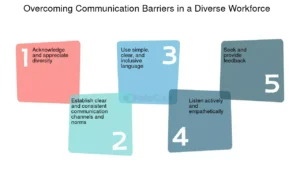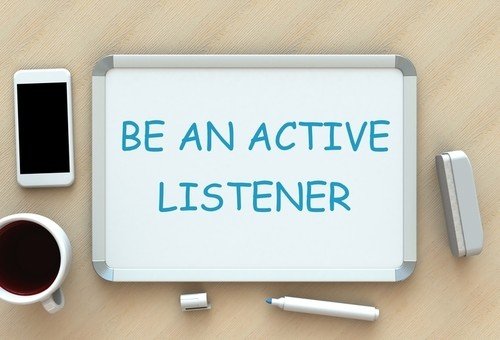Effective communication is crucial for the success of any team, especially in diverse settings where members come from different cultural, linguistic, and professional backgrounds. Overcoming communication barriers in diverse teams requires intentional strategies and practices that promote understanding and collaboration. This article explores the common communication barriers faced by diverse teams, strategies for overcoming these challenges, and the benefits of fostering an inclusive communication environment.

Common Communication Barriers in Diverse Teams
1. Cultural Differences
Cultural differences can significantly impact communication within diverse teams. Variations in communication styles, such as direct versus indirect communication, can lead to misunderstandings. For example, some cultures value explicit and straightforward communication, while others may prefer a more nuanced approach. These differences can create confusion and hinder effective collaboration.
2. Language Barriers
Language barriers are a common challenge in diverse teams, especially when team members speak different native languages or have varying levels of proficiency in the team’s primary language. Misinterpretations and unclear messaging can occur, affecting the clarity and efficiency of communication.
3. Different Communication Styles
Team members may have different communication styles based on their cultural and professional backgrounds. For instance, some may prefer detailed explanations and extensive documentation, while others may favor concise and informal communication. These differing styles can create friction and hinder effective information exchange.
4. Stereotypes and Biases
Preconceived notions and biases about different cultures or backgrounds can impact communication. Stereotypes can lead to misjudgments and affect the way team members perceive and interact with each other. Overcoming these biases is essential for fostering a respectful and inclusive communication environment.
Strategies for Overcoming Communication Barriers
1. Foster Cultural Awareness
Promoting cultural awareness is key to overcoming communication barriers. Providing training and resources that educate team members about different cultures and communication styles can enhance understanding and reduce misunderstandings. Encouraging team members to share their cultural backgrounds and experiences can also foster mutual respect and empathy.
2. Encourage Open Communication
Creating an environment where team members feel comfortable expressing their thoughts and concerns is crucial. Encourage open communication by actively seeking feedback and addressing any issues promptly. Implementing regular check-ins and team-building activities can help build trust and improve communication.
3. Use Clear and Inclusive Language
To minimize language barriers, use clear and simple language in all communications. Avoid jargon, idioms, and complex phrases that may be confusing to non-native speakers. Providing written documentation and summaries can also help ensure that everyone understands the key points.
4. Leverage Technology
Utilize technology to facilitate communication in diverse teams. Tools such as translation software, collaborative platforms, and video conferencing can help bridge language gaps and enhance collaboration. Choosing technology that supports multiple languages and offers accessibility features can further improve communication.
5. Address Stereotypes and Biases
Actively work to identify and address stereotypes and biases within the team. Encourage open discussions about these issues and provide training to help team members recognize and challenge their own biases. Creating a culture of inclusivity and respect is essential for effective communication.
Benefits of Effective Communication in Diverse Teams
1. Enhanced Collaboration
Overcoming communication barriers leads to more effective collaboration and teamwork. When team members understand each other and communicate clearly, they can work together more efficiently and achieve common goals.
2. Increased Innovation
Diverse teams bring a variety of perspectives and ideas. Effective communication allows these diverse viewpoints to be shared and considered, leading to increased innovation and creative problem-solving.
3. Improved Morale and Engagement
When communication barriers are addressed, team members feel more valued and included. This leads to higher morale and engagement, as team members are more likely to contribute actively and feel a sense of belonging.
4. Better Decision-Making
Clear communication enhances decision-making by ensuring that all relevant information is shared and understood. This leads to more informed and effective decisions that benefit the entire team.
Conclusion
Overcoming communication barriers in diverse teams is essential for fostering a collaborative and inclusive work environment. By addressing cultural differences, language barriers, and varying communication styles, and by promoting cultural awareness, open communication, and inclusive practices, teams can enhance their effectiveness and achieve better outcomes. Embracing diversity and implementing strategies to overcome communication challenges ultimately leads to stronger, more innovative, and successful teams.




